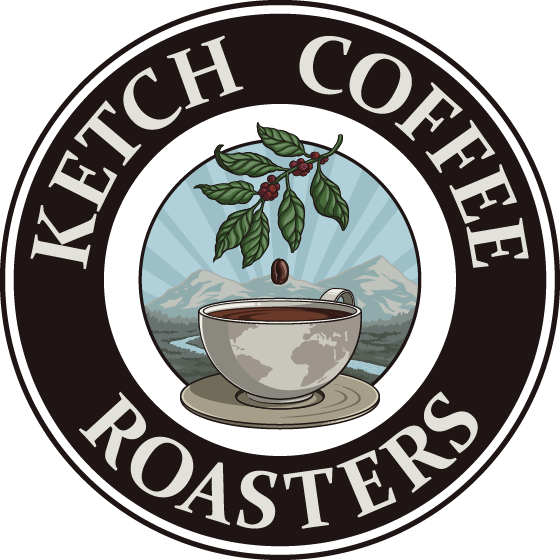Offering K-Cups is a controversial subject in the speciality coffee industry as K-Cups are seen as prioritizing convenience over quality, but this is true of other brew methods as well. In the end, the concern is that K-Cups aren’t capable of producing a cup of coffee that showcases the results of the hard work of those in the coffee supply chain who made it possible for you and I to drink the coffee. We at Ketch Coffee Roasters respectfully disagree.
K-Cups offer a low barrier to entry into the world of speciality coffee. With K-Cups, you don’t have to be a skilled barista to get a very good tasting cup of coffee. You also don’t have to spend a lot of money purchasing a digital scale, a temperature controlled gooseneck kettle, a grinder, or a variety of brewing devices. While these things are great and will enhance your specialty coffee experience (once you learn how to use them), they are also not necessary. Because of this, K-Cups are a gateway for many into the world of flavors that awaits in speciality coffee.
K-Cups and K-Cup brewers are not without their limitations for the consumer. The first limitation has do with K-Cups themselves. K-Cups do not allow you to alter the grind size or dose (i.e., how much coffee). The average commercial K-Cup only contains 9 grams of coffee. If you purchase K-Cups from the grocery store, you may well be purchasing stale, lower quality commodity grade coffee. If you don’t see a roast date on the packaging, it is safe to assume it is not fresh. The second limitation has to do with K-Cup brewers. Depending on the features of the brewer you are using, your ability to control the brew water temperature and amount of brew water used may be limited.
How does Ketch Coffee Roasters address these limitations?
First, our K-Cups only contain freshly roasted coffee. Always look for the roast date on the package.
Second, our K-Cups contain on average 15 grams of coffee, which is approximately 50% more coffee than the average 9 grams of coffee in most commercially available K-Cups. We use 16 grams of coffee for our lighter roasts, and as little as 14.5 grams for some certain dark roasts. As coffee roasts darker, it swells and increases in volume.
Third, we do extensive testing of each freshly roasted coffee we offer to determine if we can find the right combination of grind size and dose to produce a cup of coffee comparable to how the same coffee tastes brewed as filter coffee. If not, we will not offer the coffee as a K-Cup.
Fourth, we conduct this testing with a baseline, lower-cost K-Cup brewer that is commonly found in most homes and businesses, which offers a six ounce, eight ounce, and a ten ounce brew option. We use the eight ounce brew option as our baseline brew strength. When you select the eight ounce brew option on K-Cup brewers, our 15 gram K-Cups will provide you a 1:15 brew ratio, which is also where we recommend starting with filter coffee. Compare this to the industry average of 9 grams, which results in a much weaker 1:25 brew ratio. If you select the six ounce brew option, our 15 gram K-Cups will give you a concentrated 1:11 brew ratio. If you select the ten ounce brew option, our 15 gram K-Cups will give you a 1:19 brew ratio.
